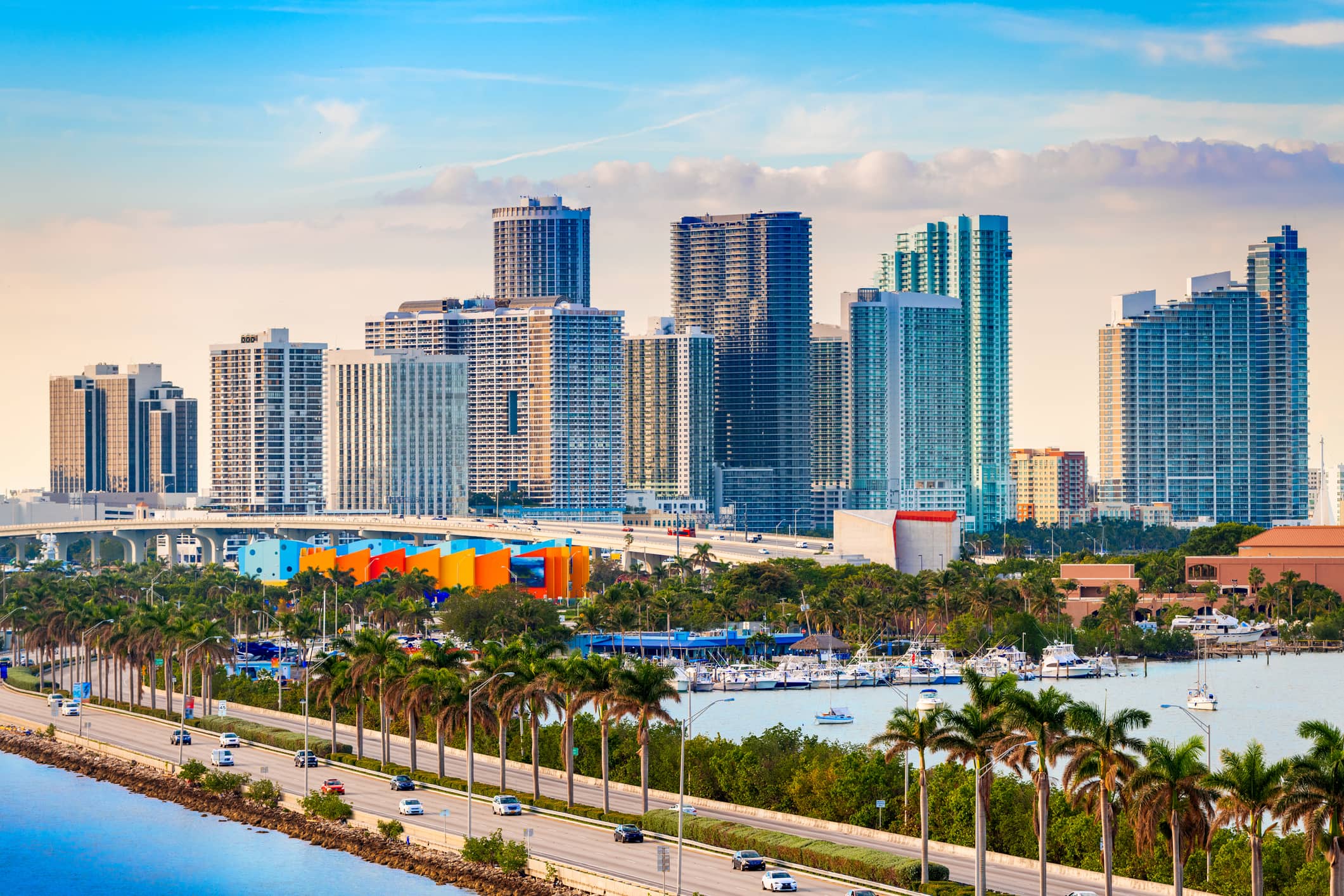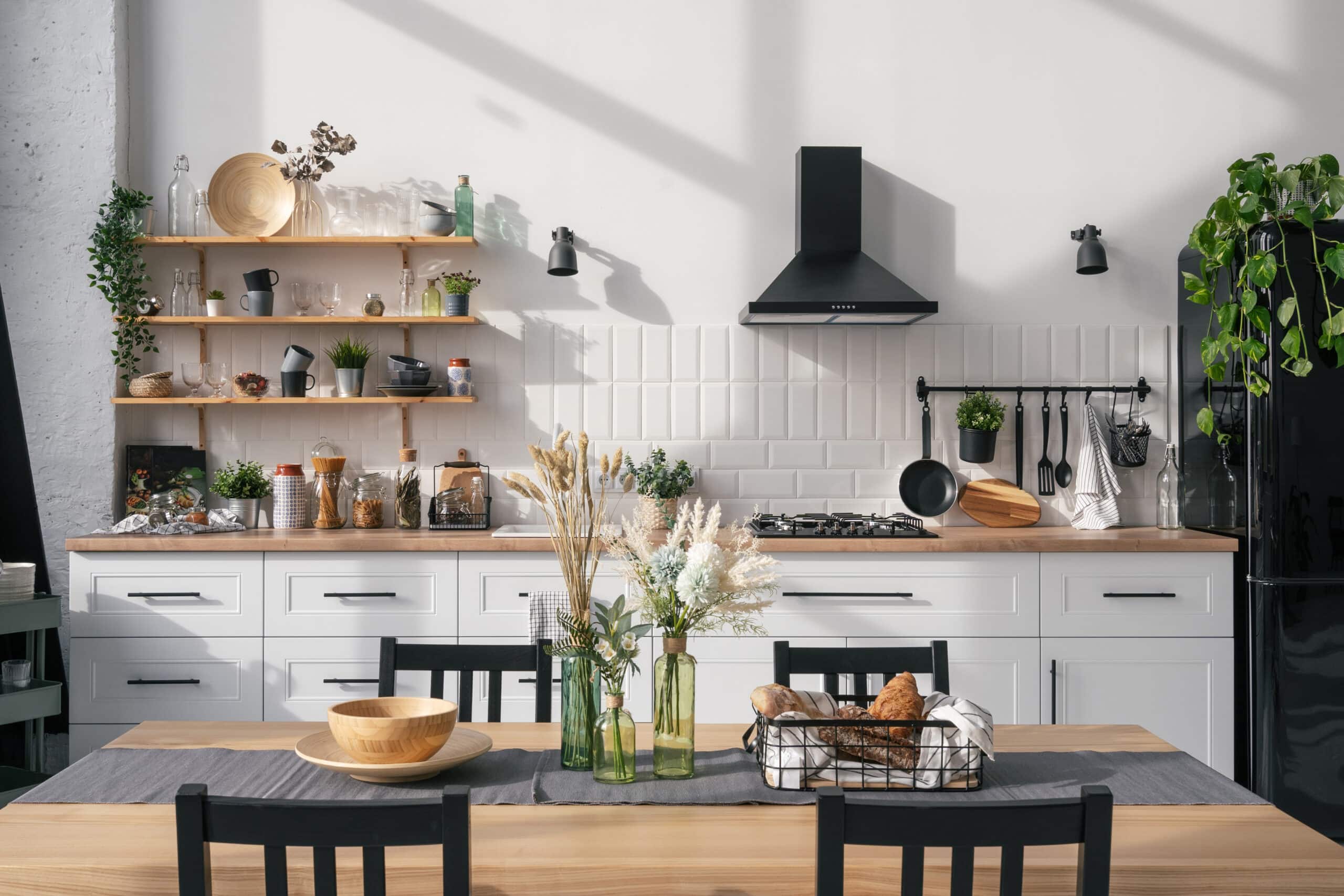Quick Facts about Miami
Between the wilds of the Everglades and the whirling surf of the Atlantic, Miami is an international paradise on southern American shores. The city may be known by many names —the Gateway to the Americas, the Magic City, the Cruise Capital of the World and, most simply, as the 305 — but none of them fully captures the unique style and vibe of Florida’s most shimmering jewel.
A city on the edge of the continent with an ocean view of the world, Miami is a place that pushes the boundaries. Its nightlife is legendary, its art deco architecture is a national treasure and its beaches beckon visitors from every corner of the earth.
Cosmopolitan and complex, Miami is more than just surf and sunshine. There are world-class museums of art, science and history. There are extravagant art fairs and blowout music festivals. There are historic international neighborhoods, and on any given day in the Magic City, you can hear over 125 different languages spoken, from Spanish to Haitian, Chinese, Portuguese and Cajun.
With the city’s booming economy, it’s easy to see why so many newcomers are flocking to the biggest city in south Florida, whether they’re looking for a posh home in the suburbs of Miami-Dade County or a minimalist condo on Miami Beach with a view of the Atlantic Ocean.
If you’re thinking of making Miami your new home, learn more about this exciting city below. And if you’re not sure where in Florida you might be relocating, check out United Van Lines’ Guide to Moving to Florida for information about major cities and attractions throughout the Sunshine State.
The Growing and Diverse Population of Miami
Over the past twelve years, the populations of the City of Miami and Miami-Dade County have grown, with the city gaining 50,000 new residents and the county gaining over 175,000. The county hasn’t yet recovered from its pandemic losses, so population numbers there have remained somewhat suppressed since 2020.
With its proximity to Cuba, Miami has long had a robust Latin American community, and roughly 70% of residents in the greater Miami area identify as Hispanic/Latinx. It’s no surprise that the city is often lovingly referred to as the Gateway to Latin America. More than 75% of residents speak a language other than English at home, so it certainly couldn’t hurt to brush up on your Spanish if you are moving to Miami.
Within the city, the population is remarkably diverse, with 15.2% of residents identifying as Black or African American and 23% identifying as two or more races. Little Havana and Little Haiti are just two of the well-established neighborhoods that have long welcomed new immigrants to the city, and it’s hard to even imagine the city without these communities that anchor it.
Below we’ll discuss more of what makes Miami such a vibrant and rich place to call home, including other neighborhoods, the robust economy and job market, the beautiful weather and, of course, the many fun things to do in the city from morning till night.
Cost of Living in Miami
Like many of Florida’s biggest cities, the cost of living is higher than the U.S. average. But Miami’s still pales in comparison to coastal giants like New York, Los Angeles and San Francisco, where real estate prices have reached a new level of unattainability. The median home value in Miami is $369,100 and rent tops $1,300 per month. Housing rates in Miami-Dade county are comparable, but rent is higher. You’d pay nearly twice as much for a home in NYC or LA, and over three times as much for a home in the Golden Gate City. Compared to Tampa and Orlando, though, single-family homes are far less affordable in the Miami metro area, though rent is fairly comparable.
Like other cities in Florida, Miami’s residents pay no state income tax, and there is also no local corporate income tax in the city. The state’s corporate income tax rate is 5.5%, and the city and state offer many tax exemptions to industries, in an effort to make the city more attractive to businesses.
Please note: we are not tax experts and are not offering tax advice, other than you should consider obtaining additional information and advice from your legal and/or financial advisers who are fully aware of your individual circumstances.
Miami Economy and Job Market
The Miami job market has proven to be remarkably stable — increasingly so over the past decade — despite the understandable plunge during the pandemic, when tourism suffered enormous losses across the world. The unemployment rate has stood at or below 2.2% since November of 2022 — nearly a point and a half below the national average (3.6%). Trade, Transportation & Utilities is the single biggest non-farm sector for this port city, followed by Education & Health Services, Professional & Business Services and Leisure & Hospitality. Most industries have seen solid gains over the past year, but construction has lagged woefully behind, seeing a loss of more than 7% since May of 2022.
The greater Miami metro area, including Miami-Dade county, has a diverse array of businesses, from cruise lines to healthcare, and some of the area’s biggest employers are American Airlines, Publix, Baptist Health South Florida and the University of Miami. Burger King has its headquarters in the city, as do Ryder and Royal Caribbean, which launches the world’s largest cruise ship – the Icon of the Seas — from Port Miami.
The income gap between the Magic City and the rest of the nation is stark: residents of the city of Miami earn only $47,860 a year per household and residents of Miami-Dade County earn only $57,815, while the national median household income is nearly $70,000. Poverty levels in the city are nearly twice the national average, and levels in the county are also elevated. Across industries — from nursing to construction to accounting — hourly wages are lower for Miami workers than they are elsewhere in the U.S. The median household income in the city is also lower than all other major cities in the state except Gainesville.
If there is a bright spot, it may be this: there is no state income tax in Florida.
Weather in the Magic City
The tip of the Sunshine State has long been a destination of sun-starved snowbirds seeking respite from the cold. With its cool sea breezes and warm, southern climes, Miami is as enticing as any faraway tropical isle.
Because of its tropical climate, Miami is also one of the rainiest cities in the country, receiving an average of more than 70 inches per year, with very little falling during the winter and whole feet of rain falling during the summer months. The annual average temperature is an easy 78.2 F, but high temperatures creep into the 90s F for at least six months of the year, and humidity levels are usually off the charts. Tourists (and even residents) tend to avoid the city in July and August, when it is too hot to enjoy anything but piña coladas.
It’s no secret that Miami is a city on the front lines of climate change, and the intensity and frequency of hurricanes, flooding and damaging winds has only increased since the turn of the century. The city has adopted several mechanisms to deal with the impact of these catastrophic weather events, which cost the city billions of dollars and some residents their homes and lives. The city government has committed to carbon mitigation strategies, adaptive and sustainability measures and partnerships with groups who are already leading the charge to help humans adapt to the realities of life in the 21st century.
Commuting in Miami
While people still love their cars in Miami, the city does have a robust public transportation network with buses and multiple train systems.
In an endeavor to make the city more walkable, the city has invested in free public transit like the Miami Trolley and the Metromover, which operate only downtown but do connect to the broader transit system. These interventions help to mitigate carbon emissions and traffic in the most congested areas, and they make it easier and more fun to explore the city on foot.
Metrobus and Metrorail are designed for longer commutes. Both cost $2.25 a ride for the standard fare, and these can get you almost anywhere you want to be in Miami-Dade County. The Tri-Rail system can take you all the way from the Miami airport to West Palm Beach, so if you’re considering living in Boca Raton or Pompano Beach, Tri-Rail gives you an easy way to commute to work in Miami.
CitiBike also operates a bike share in Miami. If you prefer to ride your own bike, all Metrorail transit stations and Park & Ride lots have bike racks.
Top Neighborhoods in Miami
Miami has some of the liveliest and most distinctive neighborhoods in the country. In downtown, there are famous areas like South Beach, with its art deco treasures and bustling nightclubs. Then there are artsier enclaves, like Wynwood Arts District, where dynamic murals, created by art supernovas like Shepard Fairey and Kenny Scharf and local star like Ernesto Maranje and the MSG Crew, awaken once-sleepy warehouse buildings. Fashion reigns supreme in Miami Design District, where you’ll find blocks of high-end retailers as well as the Institute of Contemporary Art Miami and the art incubator Locust Projects. Whatever kind of neighborhood you’re looking to move to, you’re almost certain to find a place in Miami to suit your needs.
In north Miami on Biscayne Bay, the historic Brickell neighborhood is a cultural destination. There are great museums for family fun, like the Frost Museum of Science, and others presenting the edgiest works by today’s hottest contemporary artists, like the Pérez Art Museum Miami. The symphony, ballet and opera all perform in this district. The Brickell City Centre — a shopping mecca designed by Arquitectonica — is practically a city unto itself. This live-work-play destination has everything from a lobster shack to Puttshack and a 100,000sf+ Saks Fifth Avenue. The Skyviews Miami observation wheel draws tourists and staycationing locals, who are treated to jaw-dropping views of city and shore from the iconic Ferris wheel. Glitzy skyrises dominate the real estate market here, boasting panoramic ocean views and rooftop pools.
At the southernmost point of the city, Coconut Grove is one of the most exclusive areas of the city. This upscale area with a relaxed vibe is situated on the coast just east of ritzy Coral Gables and is one of the oldest neighborhoods in the city. It’s also home to the historic Little Bahamas area, which was settled by Bahamians in the 1870s. In this coveted district, you’ll find two-story, contemporary townhomes, stylish four-bedroom homes and sprawling, multimillion-dollar Spanish colonial revivals fit for royalty. Shopping, dining and entertainment here are all easily accessible and first-rate, whether you’re looking for indie gift shops or a raw bar on the waterfront. With plenty of greenspaces and quiet streets, Coconut Grove is a highly walkable and bikeable area, too.
Note: If you’re thinking of moving to Miami, it’s important to thoroughly research neighborhoods or areas in the city you might be interested in living. Before you decide where you are going to live, make sure you understand the area’s cost of living, commute time, tax rates, safety statistics and schooling information.
Where the Locals Have Fun
Nobody turns every day into the extraordinary like Miamians do. This city sparks with electricity 24-7, and whether you’re looking for a chill place to sip sangria or a dusk-to-dawn club to dance the week away.
The Beaches
Newcomers may be surprised to learn that Miami Beach is not technically part of the mainland. This idyllic barrier isle sits on the eastern shore of Biscayne Bay, accessible only by boat or bridge. South Beach’s reputation precedes it — art deco hotels, exclusive nightclubs and posh restaurants and shops draw visitors in droves to its exclusive establishments. You can take an architectural walking tour and then have lunch at one of Ocean Drive’s many sidewalk cafés, like A Fish called Avalon. The Lincoln Road shopping district is a pedestrian-friendly area that’s off-limits to motor traffic, so it’s a great, low-key place to hang out for the day.
Back on the mainland, the North Miami Beach area is made for lower-key adventures. The state’s largest urban park is located here — Oleta State Park — and kayaking, snorkeling and even mountain biking are popular activities.
The Seaside and Beyond
If you’re looking for even bigger adventures, three of the state’s national parks are easy to get to from the city. Everglades National Park makes for a great daytrip from Miami — the main entrance is less than an hour’s drive from the city. The best way to explore this subtropical wilderness is with a guide who can identify the amazing wildlife, like roseate spoonbills, West Indian manatees and, of course, gators. The park has tours by tram and boat, or you can venture into the waters alone in a kayak.
Dry Tortugas National Park is not as well-known to the general public but it’s a favorite of history buffs. This park is home to Fort Jefferson, a 19th-century military establishment. Because the park — located on Garden Key — is accessible only by boat or seaplane, you’ll have more room to snorkel in coral reefs of the island’s pristine waters, where you might be joined by sea turtles or the occasional group of nurse sharks, who are usually too sedate to bother with humans. That is, unless humans are bothering them.
Biscayne National Park preserves a large swath of ocean off the coast of South Florida, where visitors can sail, kayak and scuba dive. One of the most interesting sights at this park are the many shipwrecks, marked by large buoys along the Maritime Heritage Trail, where you’ll also find the Fowey Rocks Lighthouse — also known as the Eye of Miami — that was first lit in 1878.
Learn more about these in our Guide to National Parks of the Southeast.
Miami Nightlife
Miami’s club scene may have hit a snag in 2020, but it is back and better than ever. There are intimate establishments like Medium Cool, which occupies the basement of the swanky Gale South Beach hotel and imposes a strict dress code — absolutely no tank tops or flip-flops will be tolerated in this bar.
Then there are mega-clubs like E11EVEN, which boast performances by the likes of Drake and Nicki Minaj as well as acrobats, contortionists and dancers in its wall-throbbing warehouse space.
If you’re just looking for a place to hang out, try Hyde Beach. This unabashedly exclusive poolside club has a yachtlike interior designed by Phillipe Starck and elevates lounging to a high art.
Sports
Sports fanatics will be in good company in this south Florida city, and the fact that the state has so many pro teams from Tampa to Jacksonville make for fun and (mostly) friendly rivalries.
The Magic City has the NFL’s Miami Dolphins, the MLB’s Miami Marlins, the NHL’s Florida Panthers and the city favorite, the NBA’s Miami Heat. The newest arrival is the MLS’ Inter Miami CF, a team established in 2018 and who is at the bottom of the standings midway through the 2023 season but is sure to bounce back with the addition of GOAT Lionel Messi. The city has hosted more than a dozen Super Bowls, and it will also host the FIFA World Cup in 2026.
Miami’s International Flavors
With talented chefs from all over the world, Miami is a city that you can never — ever — get bored eating in. You’ll find incredible Caribbean and Latin American fare, but you’d be hard-pressed to find an international flavor that isn’t represented well in this global city.
The street food scene is strong at the Wharf Miami, where upscale vendors line the banks of the Miami River. You’ll find satisfying sushi from the Sake Room and artisan pizza from Spris, among others.
But you can’t really consider yourself a foodie in Miami until you’ve sampled the Cuban fare, which runs from humble mom-and-pops like Enriqueta’s to the Michelin-recommended menu of Café La Trova, where the Crispy Whole Boneless Snapper is a truly a thing to behold and be eaten.
Jaguar Sun has one of the most unusual menus of any fusion restaurant we’ve encountered, mainly because it leaves many of its amazing and unexpected flavors largely unfused. The raw bar, which features oysters, scallops and yellowtail, has a Japanese/West Coast vibe, while the small plates feature assorted familiars — Caesar salad, beef carpaccio and even Parker House Rolls. The main event is pasta, which hews closely to Italian standards except for the occasional shishito pepper. The most remarkable dish — is the blue crab agnolotti, accented with saffron, corn and Marcona almonds.
Prepare for the Big Move to Miami
Ready to move to the Magic City? Start looking for the right professional moving company to help you move to Miami.
Are you moving cross-country to Miami? We can provide you with a customized, full-service moving package. As America’s #1 Mover®, United Van Lines can take care of all your moving needs, including packing and unpacking, shipping your car to Miami, storage, debris removal and more. The MyUnited Move Portal will keep track of everything.
Are you moving to Miami locally? If so, United Van Lines’ interstate Florida movers and Miami movers provide local moving services independently under their own brands and business names.
Are you planning a DIY move moving to Miami? United Van Lines can provide you with a wealth of helpful moving resources, including moving checklists, packing tips and regional guides.
Not sure where to move in Florida? We’ve got tips. Check out United Van Lines’ Guide to Moving to Florida for information and resources about the most popular cities in Florida.





